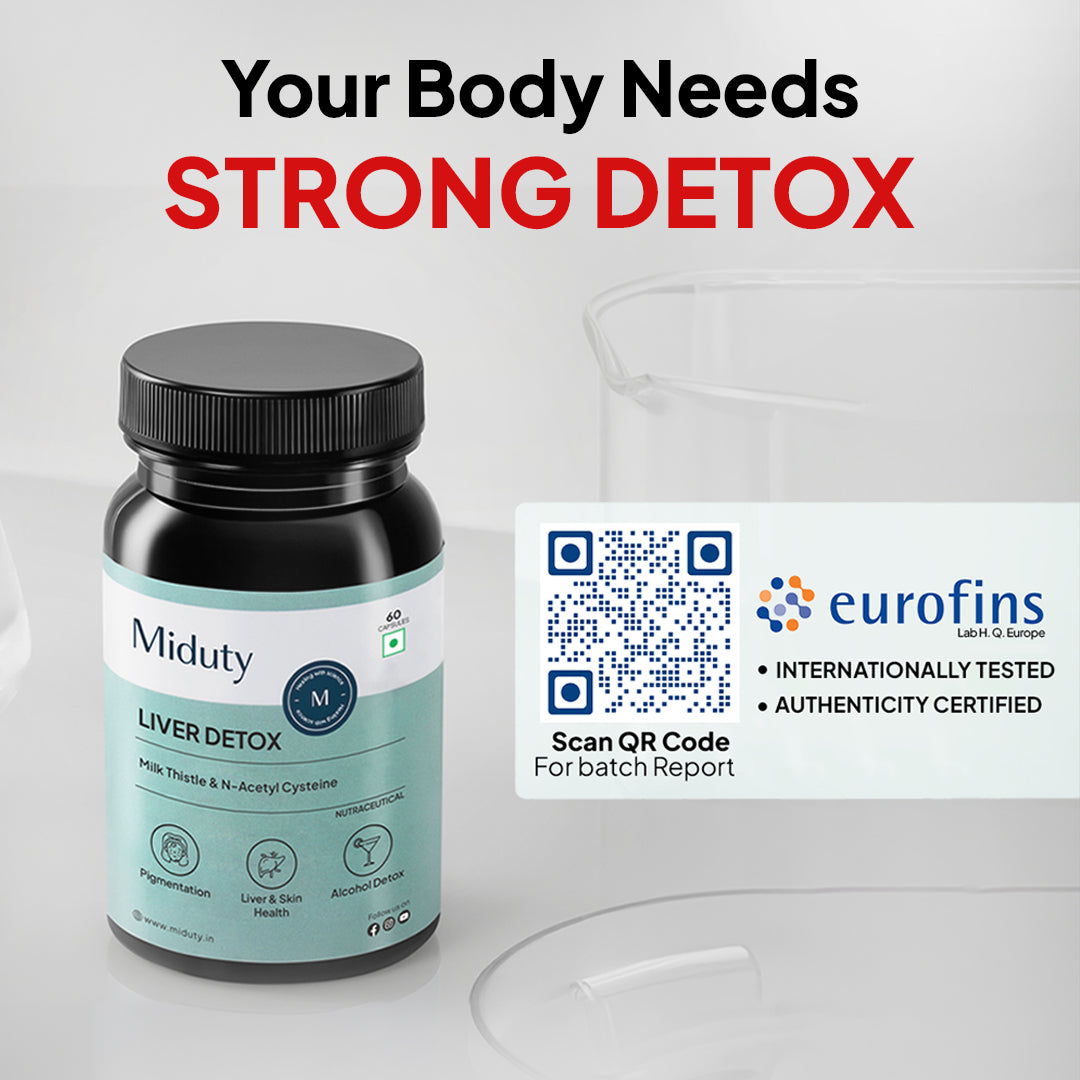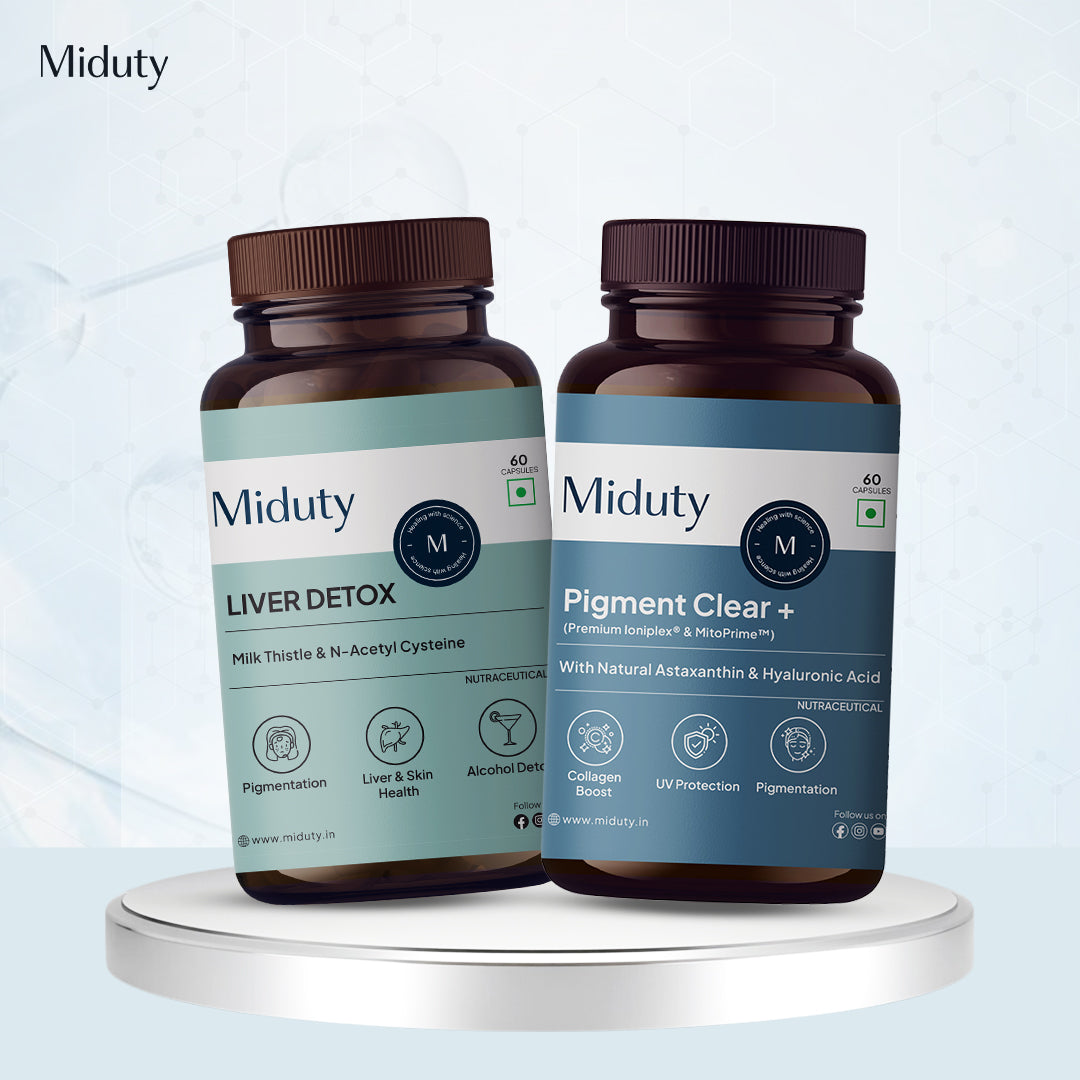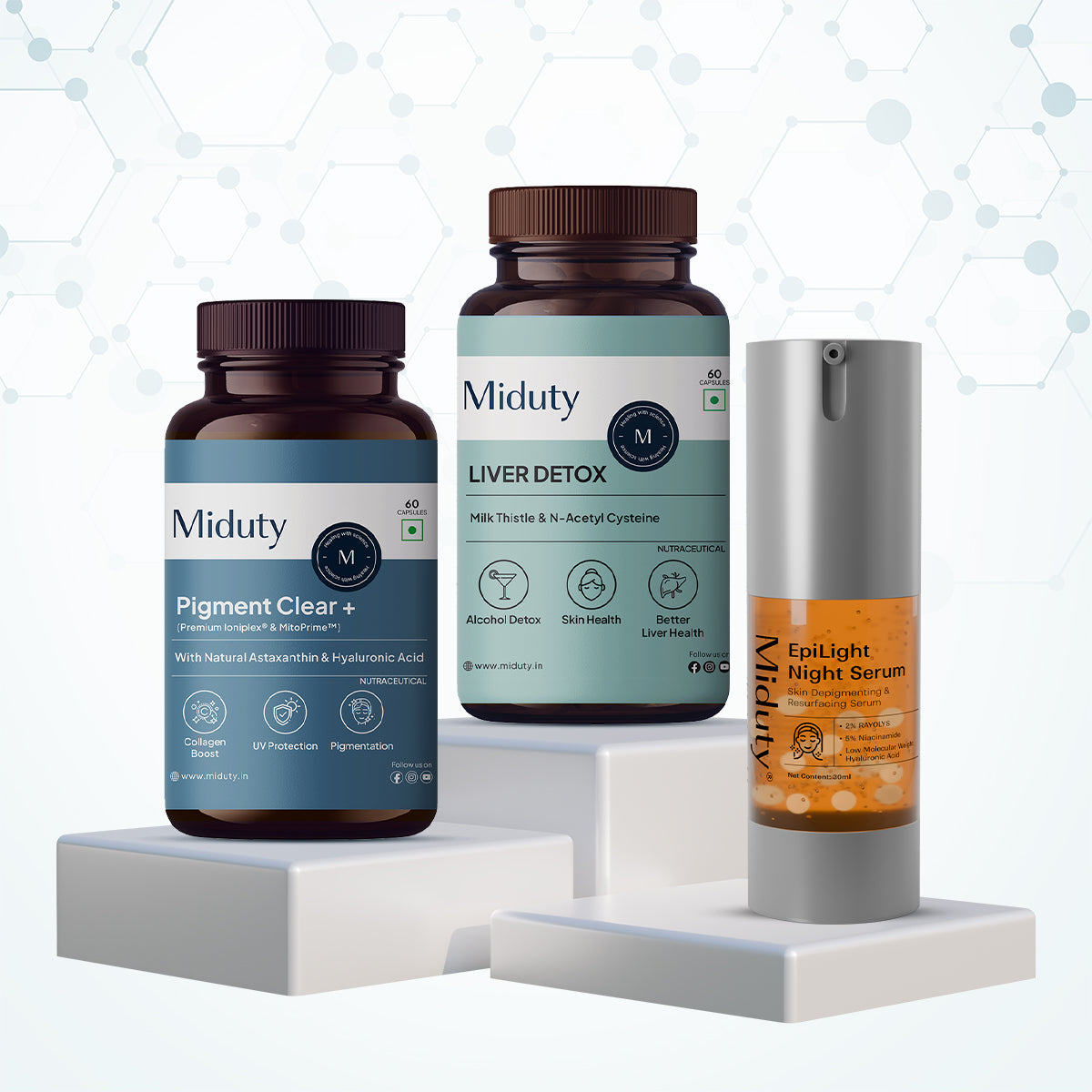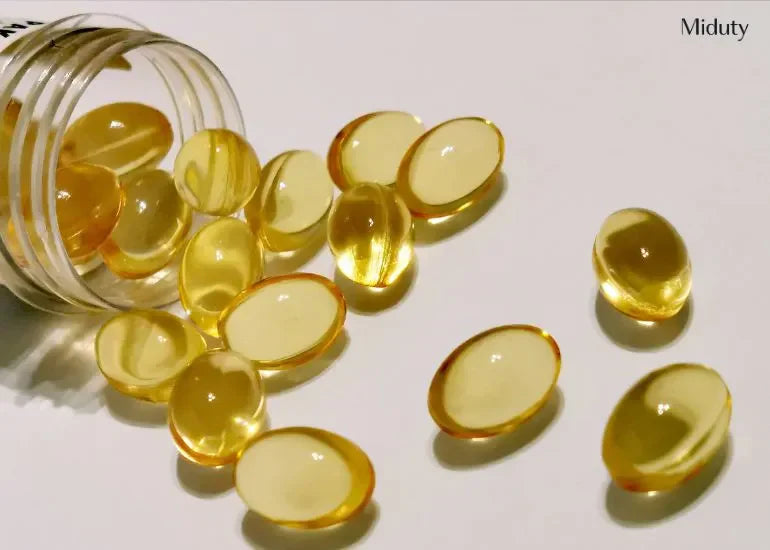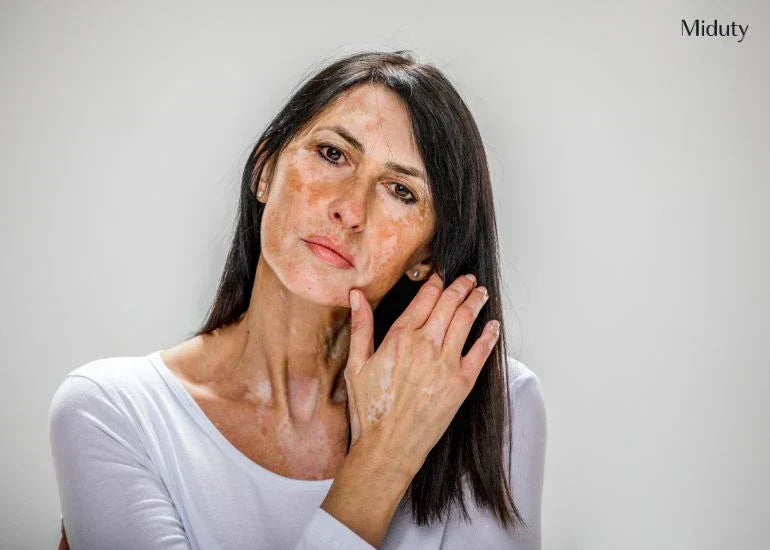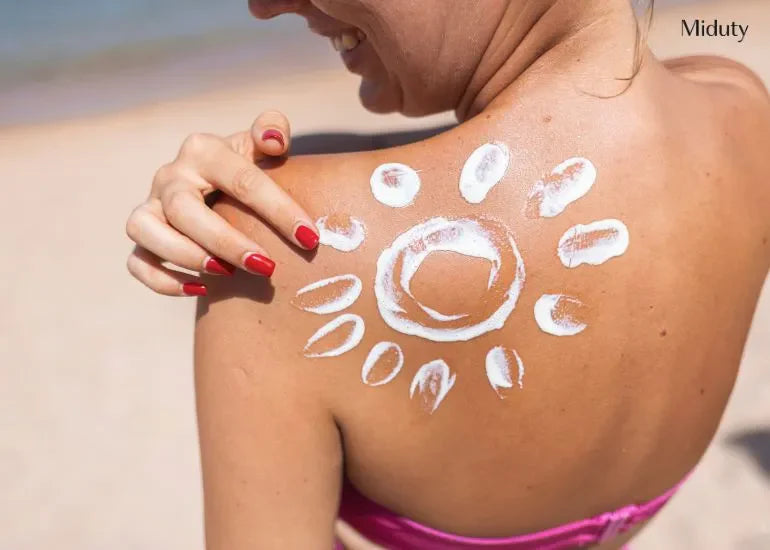
Post-Inflammatory Hypopigmentation: Causes, Types and Treatments
Noticing light patches on your skin after a rash, burn, or breakout? You're not alone. These pale spots, often called Post-Inflammatory Hypopigmentation (PIH), can feel just as frustrating as the condition that caused them in the first place. While harmless, they tend to stand out, especially on medium to dark skin tones, making many people feel self-conscious.
The good news? PIH usually fades with time, and there are effective ways to speed up recovery and protect your skin in the process. In this blog, we'll break down what PIH is, why it happens, and the best treatment and care strategies to bring back your skin's natural balance.
Key Takeaways
1. PIH fades, but patience is key – most cases resolve naturally within months, though severe ones may linger longer.
2. Treat the root first – calming inflammation early (eczema, infections, rashes) prevents lingering light patches.
3. Boost healing inside and out – supplements like NAC, milk thistle, vitamin D, C, and B12, plus barrier-supportive skincare, can speed recovery.
4. Light can restore light – therapies like excimer lasers, PUVA, and narrowband UVB show promise for stubborn cases.
5. Shield & conceal – sunscreen, gentle skincare, and cosmetic camouflage protect skin and confidence while pigment returns.
What Is Post-Inflammatory Hypopigmentation (PIH)?
Post-Inflammatory Hypopigmentation (PIH) is a skin condition marked by lighter patches or macules that appear after an initial inflammatory event, such as a rash, burn, infection, or cosmetic procedure. This results from reduced melanin production, disrupted melanosome transfer, or melanocyte damage. The patches are usually temporary but can last for months, and they are more noticeable in individuals with darker skin tones.
Causes of Post Inflammatory Hypopigmentation
Post-Inflammatory Hypopigmentation can develop after the skin undergoes stress or injury, leaving behind lighter patches as it heals. Several underlying factors can trigger this process, making the condition appear in different ways for different people.
1. Inflammatory Dermatoses and Skin Conditions
Conditions like eczema (atopic dermatitis), pityriasis alba, psoriasis, and lichen striatus commonly precede PIH. Lichen striatus in particular is often followed by hypopigmented streaks, especially in children and young adults.
2. Infections and Burns
Tinea versicolor (pityriasis versicolor), a fungal infection, can leave lighter areas of skin after the infection clears. Severe burns, wounds, and injuries may damage melanocytes permanently, resulting in longer-lasting hypopigmentation.
3. Dermatological Procedures & Iatrogenic Causes
Cosmetic procedures such as chemical peels, laser resurfacing, dermabrasion, or cryotherapy may trigger PIH if overly aggressive or improperly performed.
4. Other Conditions
Less common causes include discoid lupus, scleroderma, pityriasis lichenoides chronica, leukoderma syphiliticum, and certain cutaneous lymphomas.
Types of Post Inflammatory Hypopigmentation
While Post Inflammatory Hypopigmentation refers specifically to hypopigmentation that follows inflammation or injury, it's important to understand how it differs from other types:
1. Genetic conditions: Albinism and piebaldism are congenital and permanent, unlike Post Inflammatory Hypopigmentation.
2. Vitiligo: Caused by autoimmune destruction of melanocytes, resulting in complete depigmentation, not partial hypopigmentation.
3. Idiopathic guttate hypomelanosis (IGH): Small white spots that appear with aging, often mistaken for Post Inflammatory Hypopigmentation.
Diagnosis & Clinical Features
Post Inflammatory Hypopigmentation lesions usually mirror the size and shape of the preceding rash, injury, or inflammation. In darker skin types, the contrast between normal skin and lighter patches is much more visible. Wood's lamp examination helps distinguish between hypopigmentation (reduced pigment) and depigmentation (complete loss of pigment). Histology or advanced imaging may reveal melanocyte depletion or reduced melanin distribution in persistent cases.
What are the Treatment Approaches for Post Inflammatory Hypopigmentation?
Treatment of Post Inflammatory Hypopigmentation requires a multipronged approach that addresses both the underlying inflammation and the visible pigment changes. Since many cases improve over time, supportive care is as important as medical intervention.
1. Topical Treatments
- Calcineurin inhibitors like tacrolimus or pimecrolimus can reduce inflammation and stimulate repigmentation. They are particularly effective in darker skin and in Post Inflammatory Hypopigmentation caused by eczema.
-Medium-potency corticosteroids are sometimes used, though results are variable and long-term use carries risks.
- Rucinol serum: A skin-brightening agent that helps normalize pigmentation and reduce uneven tone. It is often combined with other actives in cosmeceutical formulations for faster results.
- Moisturizers with ceramides support barrier repair, especially in eczema-related PIH, preventing flare-ups that could prolong hypopigmentation.
2. Oral Supplements
- N-acetylcysteine (NAC): An antioxidant that improves cellular repair, reduces oxidative stress, and may support melanocyte recovery.
- Milk thistle (silymarin): Known for its anti-inflammatory and hepatoprotective properties, it may indirectly aid skin recovery and protect against oxidative damage that worsens pigment irregularities.
- Vitamin D: Supports immune function and skin cell growth; adequate levels may aid overall skin healing and balance.
- Vitamin C: A potent antioxidant that supports collagen synthesis, enhances wound healing, and may reduce oxidative damage that contributes to uneven pigmentation.
- Vitamin B12: Essential for DNA synthesis and red blood cell formation; deficiencies have been linked to pigmentation changes, so maintaining adequate levels may support skin balance and recovery.
3. Light-Based Therapies
- Topical PUVA therapy (psoralen combined with UVA exposure) can stimulate melanin production.
- Excimer laser (308-nm): Often used for vitiligo, it has shown promise in PIH with success rates of up to 60–70%, though maintenance treatments are often required.
- Controlled phototherapy: Narrowband UVB can sometimes help restore pigment when hypopigmentation is stubborn.
4. Advanced Procedures
- Melanocyte or epidermal grafting: Considered in long-standing PIH where melanocytes are irreversibly destroyed. These are highly specialized procedures performed by dermatologic surgeons.
5. Supportive & Lifestyle Measures
- Sun protection: Hypopigmented patches don't tan like surrounding skin, making them appear more prominent after sun exposure. Daily sunscreen use is crucial.
- Camouflage cosmetics: Tinted sunscreens, concealers, and waterproof makeup can provide temporary relief from uneven skin tone.
- Avoiding triggers: Harsh skincare products, aggressive cosmetic treatments, and scratching or picking at inflamed skin can worsen PIH.
Prevention & Managing Expectations
1. Early intervention: Treating the original skin inflammation (eczema, psoriasis, infections) promptly helps minimize PIH risk.
2. Gentle skincare: Using mild cleansers, fragrance-free products, and barrier-supportive moisturizers reduces irritation.
3. Patience: Most cases of PIH resolve within a few months, though severe cases may take up to a year or longer.
4. Emotional well-being: Pigmentation changes can affect self-esteem; counseling, support groups, or camouflage techniques may help individuals cope while waiting for skin to heal.
Final Words
Post-Inflammatory Hypopigmentation is a common and often distressing skin condition, especially for people with medium to dark complexions. While it usually fades over time, treatments like topical rucinol serums, calcineurin inhibitors, oral supplements (NAC, milk thistle), and light-based therapies can accelerate recovery.
The most effective strategy combines early treatment of inflammation, consistent sun protection, supportive skincare, and patience. With the right approach and dermatologist guidance, most people can expect gradual repigmentation and restoration of their skin's natural tone.
Frequently Asked Questions on Post-Inflammatory Hypopigmentation -
Q1 - Will post inflammatory hypopigmentation go away?
Post-inflammatory hypopigmentation, lighter skin patches that appear after inflammation or injury, usually fades on its own over time. The healing process varies: many cases improve within weeks to months, though some may take a year or longer. In rare situations, the discoloration can be permanent.
Q2 - What causes inflammatory hypopigmentation?
Post-inflammatory hypopigmentation (PIH), also referred to as inflammatory hypopigmentation, occurs when skin inflammation, infection, trauma, or certain dermatological procedures disrupt normal melanin production. This disruption leads to lighter patches of skin. Common triggers include eczema, psoriasis, acne, burns, and specific infections, all of which may damage melanocytes (the melanin-producing cells) or impair the transfer of melanin to surrounding skin cells.
Q3 - Should I be worried about hypopigmentation?
In most cases, hypopigmentation isn't a cause for concern, as it is usually temporary, harmless, and tends to improve on its own over time. However, you should consult a doctor if light patches appear suddenly, continue to spread, lack sensation, or are associated with other symptoms. In rare cases, hypopigmentation can signal an underlying condition, such as a skin cancer or a systemic disorder, that requires medical attention.
Q4 - What is the fastest way to cure hypopigmentation?
There's no single fastest cure for hypopigmentation, as treatment depends on the cause and severity. A dermatologist can recommend options such as topical medications, light or laser therapies, or treating the underlying condition (e.g., antifungals for an infection). Sun protection is essential in all cases.
Q5 - Can hypopigmentation turn into vitiligo?
While hypopigmentation can appear in vitiligo, it does not directly develop into vitiligo. Vitiligo is a distinct autoimmune condition in which the immune system attacks melanocytes, the cells responsible for producing pigment. Hypopigmentation, by contrast, is a general term for reduced skin pigmentation that can result from many causes, including vitiligo, but also eczema, post-inflammatory changes, or certain infections.
References


